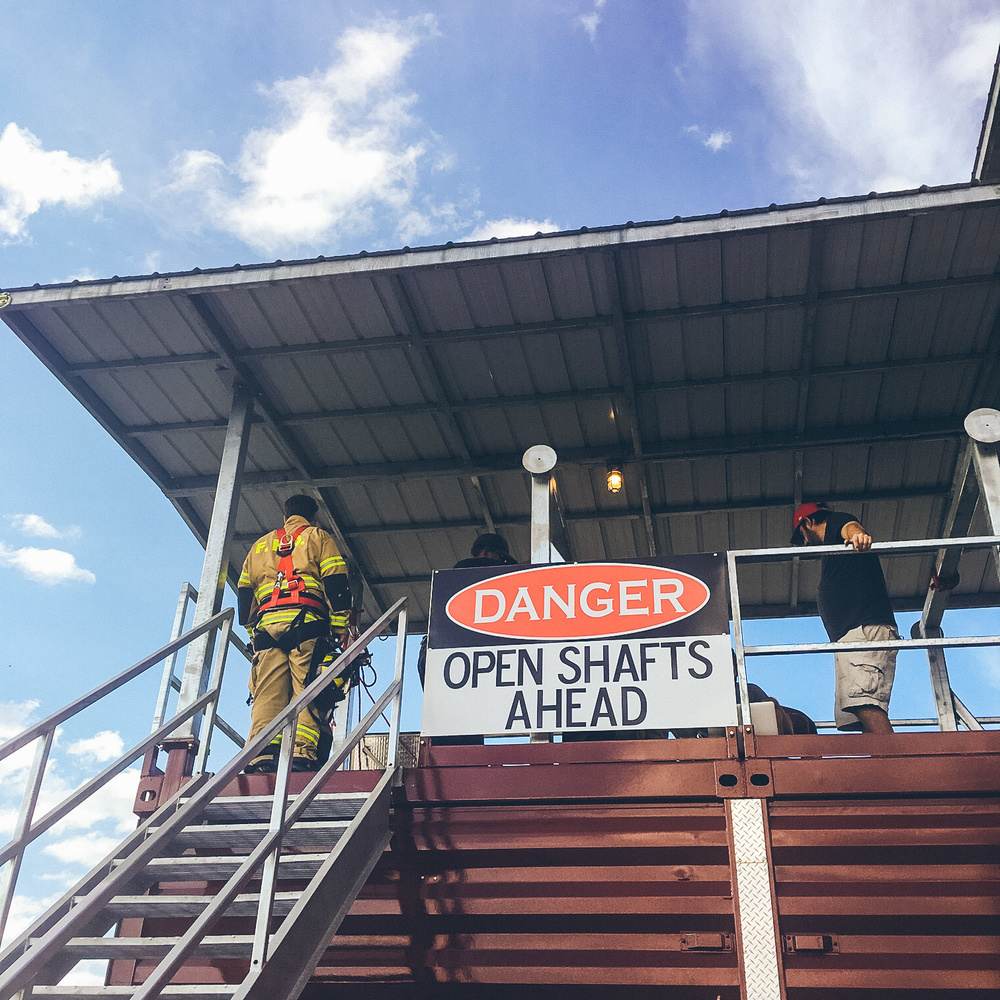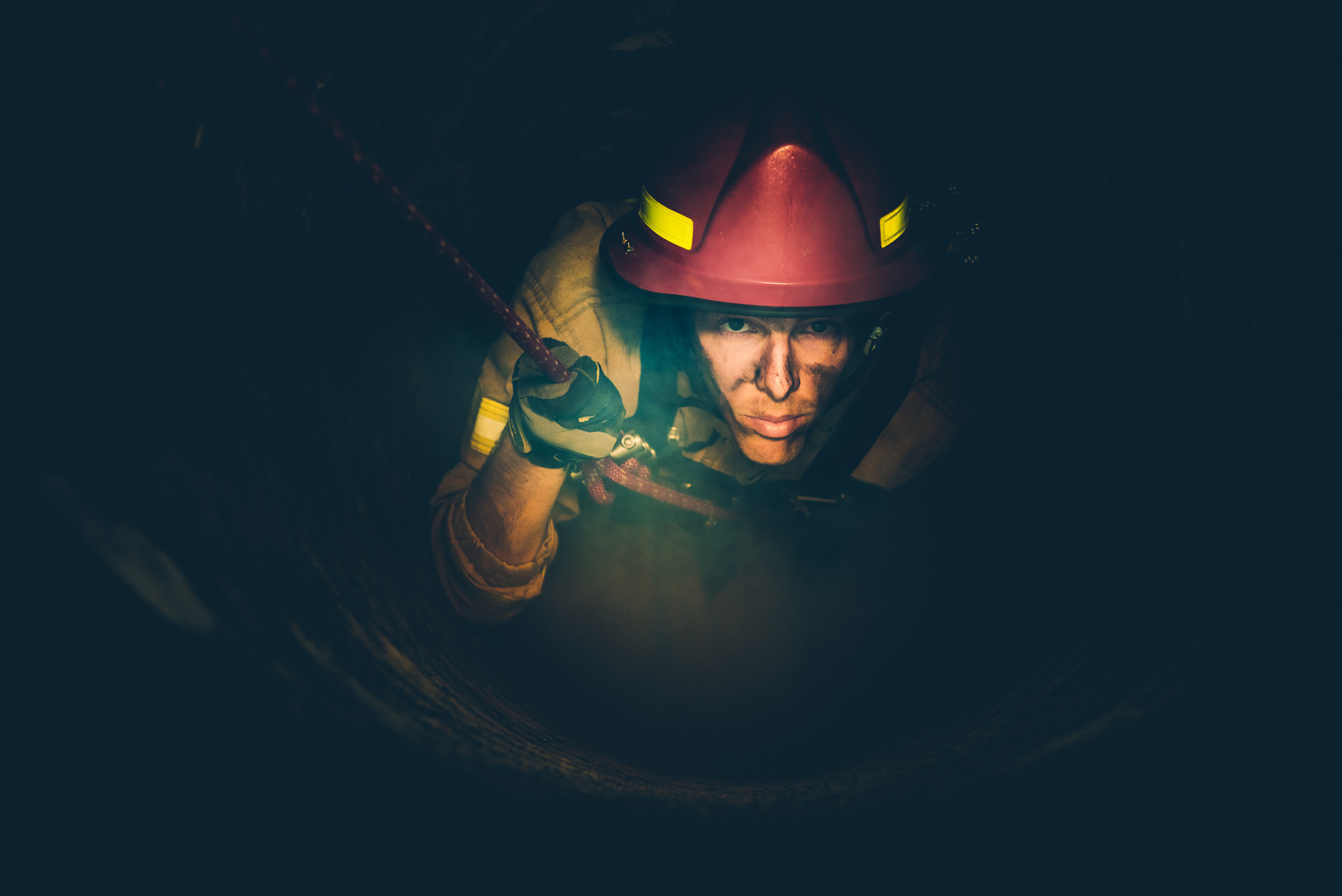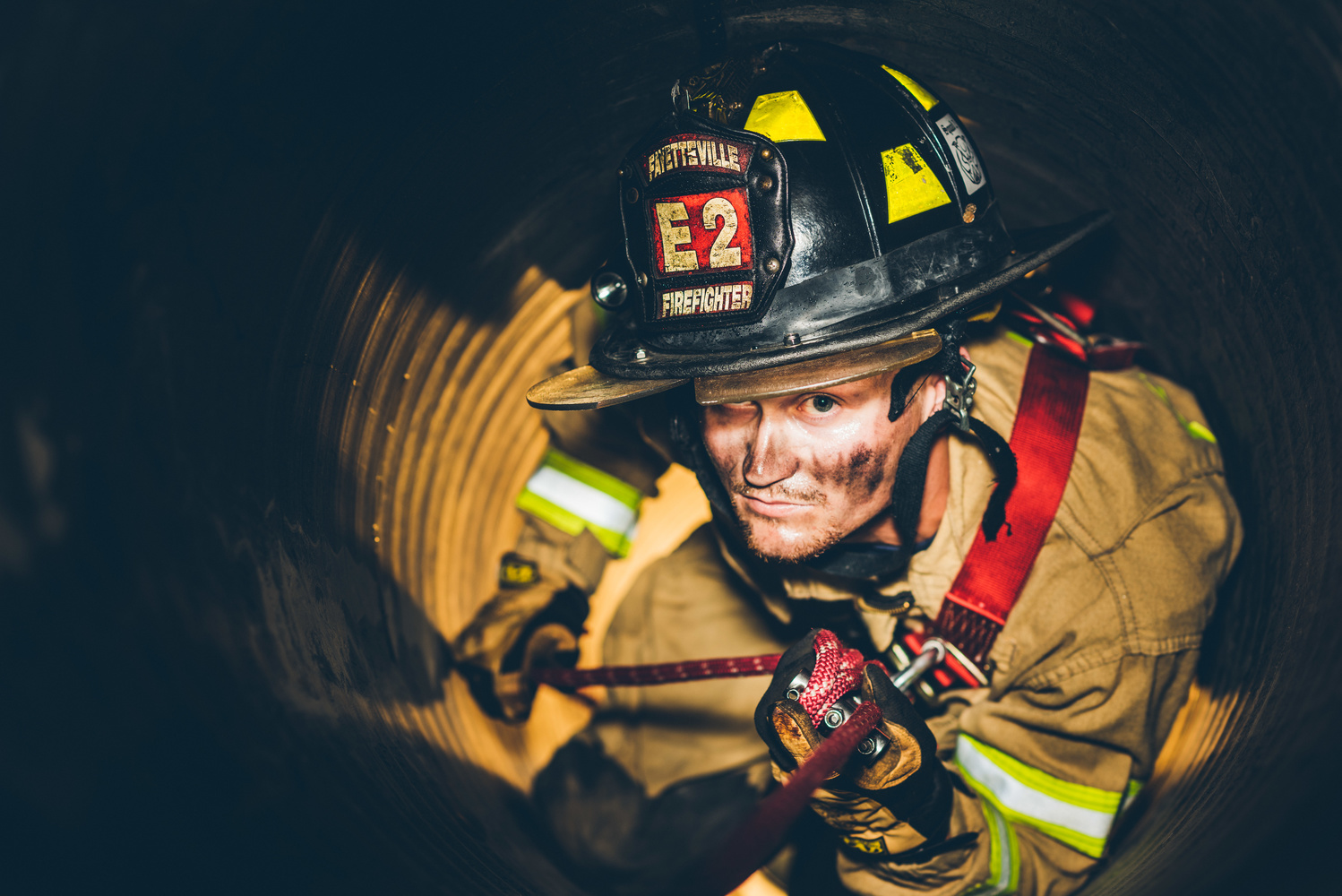Every year for the past few years, I’ve donated photo work to a local organization that puts on a half marathon in coordination with the local firefighters union chapter to raise money for local charities. Last year, I ended up doing a relatively simple shoot with just some firefighters and a ring light. This year, I wanted something different. And so, quickly and repeatedly, the question became, “Can we use real fire?”
For this year’s Fayetteville Firefighter’s Hero Half Marathon promo photos, I had my heart set on one thing: I wanted to have some real fire in at least some of the shots. You’d think this would be an easy task — I was working with firefighters, after all — but, as most things tend to be, it was more complicated than it should have been. It turns out that firefighters don’t actually like setting fires that they don’t need to set, and they especially don’t like unsuspecting, untrained civilians like myself just trying to get a picture to be in situations with fire. Especially ones that didn’t sign a waiver. Luckily, they agreed.
The location was a new training center in the industrial part of town. It was a giant, multi-story maze made of shipping containers that the firefighters can use to do multiple kinds of emergency simulations. After scouting the location a few days before, I had some ideas in mind, but I wasn’t sure exactly which images would work out or even be possible. So, I threw most of my studio in the car and headed over with two awesome assistants and the promise of pizza coming soon.
Shot Set 1
The first set of shots involved rope rescue simulations. On top of the center, there were three hatches that the firefighters can rig with ropes to practice repelling and other rope-rescue techniques. One was a small tube, one was a big open “elevator shaft,” and I don’t remember what the third one was because we didn’t open it on the day of the shoot. We decided to do photos in the first two, starting with the tube.

It was true. Photo by Melissa Caffrey.

Down the hatch! Photo by Melissa Caffrey.

I'm not sure what I was reassuring Melissa (the Executive Director of the Spark Foundation) of, but I'm sure I was confident about it. Photo by Keith Walker.

The "getting ready" shot. I'm glad I don't shoot weddings anymore. This was more fun.
The tube was, at most, two feet in diameter and was only large enough to fit one person at a time. At the bottom of the tube was a small opening that they could crawl out of (or crawl into, I guess). That was about it.
I placed a strobe on a small backlight stand with a full CTO gel attached at the bottom of the tube and pointed it upwards. The fire chief was down at the bottom of the tube opening controlling a smoke machine, and we were at the top shooting down. That was it. One man down the hatch, one at the bottom with the smoke, and two up top taking the photos. My assistant Keith was holding another Einstein strobe with a grid (I believe it was 30 degree, but I can’t recall) pointed down into the tube, and I was trying to shoot around it.

It's good to have flexible light stands. Photo by Curtis Myers.

The smoke didn't aid in visibility. Photo by Melissa Caffrey.
We quickly realized a few things: the firefighters’ hats were very large and clunky and didn’t really allow them to look up, and the smoke machine’s fog blocked a lot of the light from the strobe at the bottom and obscured the view at the top within one or two seconds of rising past the firefighter. Timing was everything.




The orange gel on the strobe at the bottom of the tube made for some fun "fire" effects.
After the tube, we went to the other shaft. We had more space to work in and play with other lighting options. First, we shot a firefighter from the same top level, shooting down into the shaft. An Einstein with a 20-degree grid was held aimed at the face and another Einstein with orange gel was placed, along with the fog machine, a story or two below.

The view from below. Photo by Keith Walker.


A quick shot using natural light as the main light but still using the gelled light in the background.
After these shots, we went down to the bottom of the shaft and were able to set up a strip box as a main light and used a speedlight with red gel in some of the images for an accent light.

Curtis Myers, whose career in photography is longer than my number of years on earth, graciously agreed to be a voice activated light stand for me for this shoot. Photo by Keith Walker.

Photo by Keith Walker.



Shot Set 2
This was actually shot set 3, but I wanted to save the best for last. But first, pizza break.

Even firefighters need to eat. Photo by Keith Walker.
Realizing that the sun was quickly setting, as it always seems to do on shoots, I wanted a shot of the firefighters with a truck. We grabbed the octabox and a strip box with grid and headed over to the truck. A simple shot, with the octa at 45 degrees from the subject and the strip box as a skip light behind them. Combined with the flashing lights of the truck, it was a simple but effective way to light the shot quickly.

Photo by Keith Walker.

Photo by Melissa Caffrey.



Shot Set 3
Finally. It’s time for the fire.
The only real option for fire we had at this facility, with the low level of planning that we did, was to burn hay in the contraptions they had built to hold wood pallets to burn during simulations. We didn’t want the fire to get too big and knew that it was going to get hot and smoky enough in the building anyway.
I brought in two lights: an Einstein on a c-stand with boom arm and a beauty dish and one speedlight with a red gel taped on set to optical slave mode. As you can tell, there wasn’t even enough light in the room to focus on the subject, so we had to break out the cell phone flashlights.

Photo by Keith Walker.
It was incredible how quickly the room filled with smoke. I couldn’t even stand up all the way without getting a lung full of it, and I’m only 5 feet 7 inches tall. The flames were hot, the sweat was real, and we had to be quick and communicative. Adding in the red gel on the speedlight added just the right amount of story to the image; I can almost feel the fire truck sitting outside waiting to offer some kind of assistance to these heroes.




This video was live on Facebook during the shoot. It's uncut and unedited, but it might give you a taste of what it was like to be there.
All of the images were shot with a Nikon D810 and various Nikon lenses: the 14-24mm f/2.8, 24-70mm f/2.8, and 70-200mm f/2.8 VRII.
I could have spent many more hours there playing with fire and light. It was great fun. All in all, even though I didn’t get as large of a variety of shots as I’d have wanted, I’d call it a success for my first time shooting with fire like this. Time flew by, as it always does, but I came away with some shots I was happy with.
Next time: fire breathers?







this is awesome.
Great shots!
Thanks for sharing this. It's a great example that no matter how well you plan a location shoot, something usually happens that requires creativity and a pivot.
Shots are awesome. There is no way larger Fire departments will allow a photo shoot in a live burn building. Breathing smoke = cancer.
I was surprised they let me in there at all!
awesome!